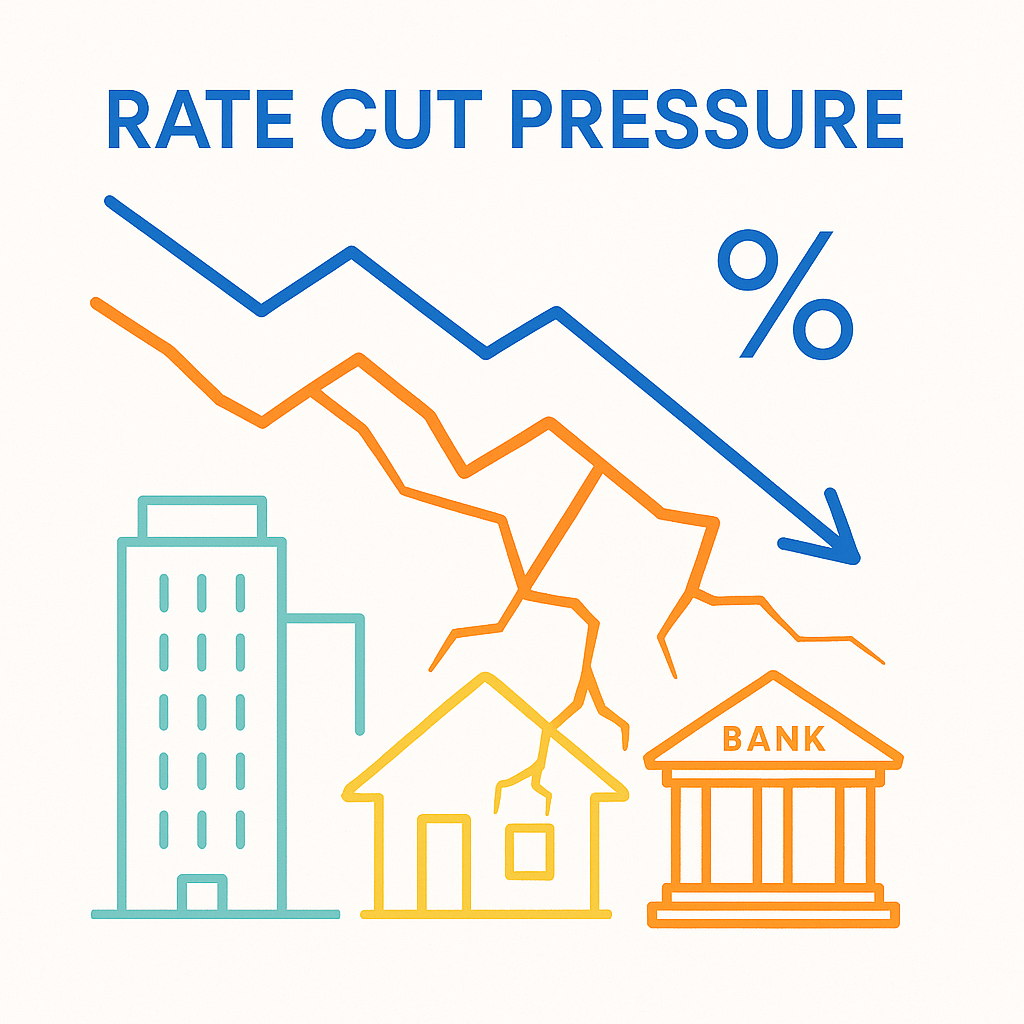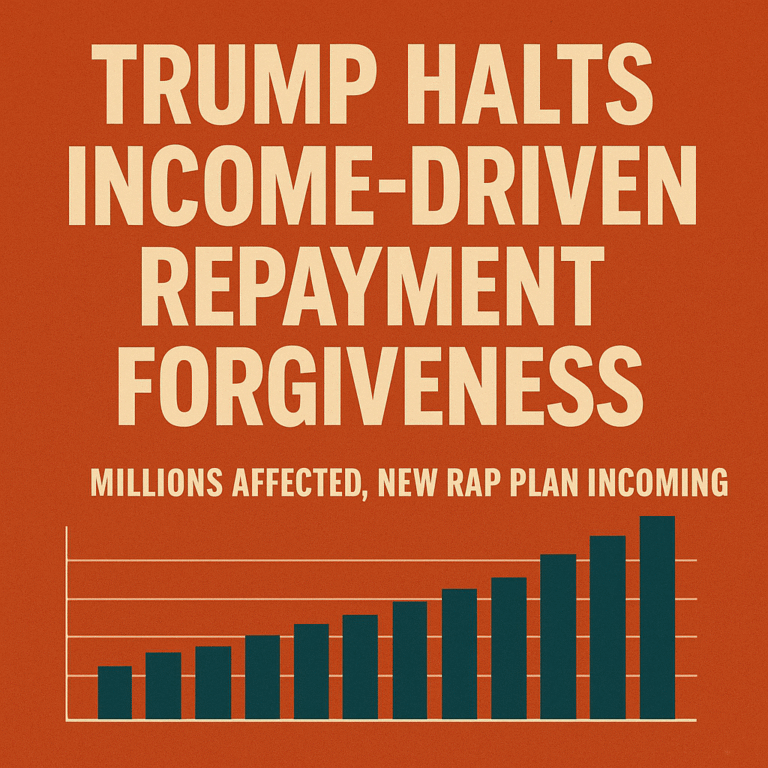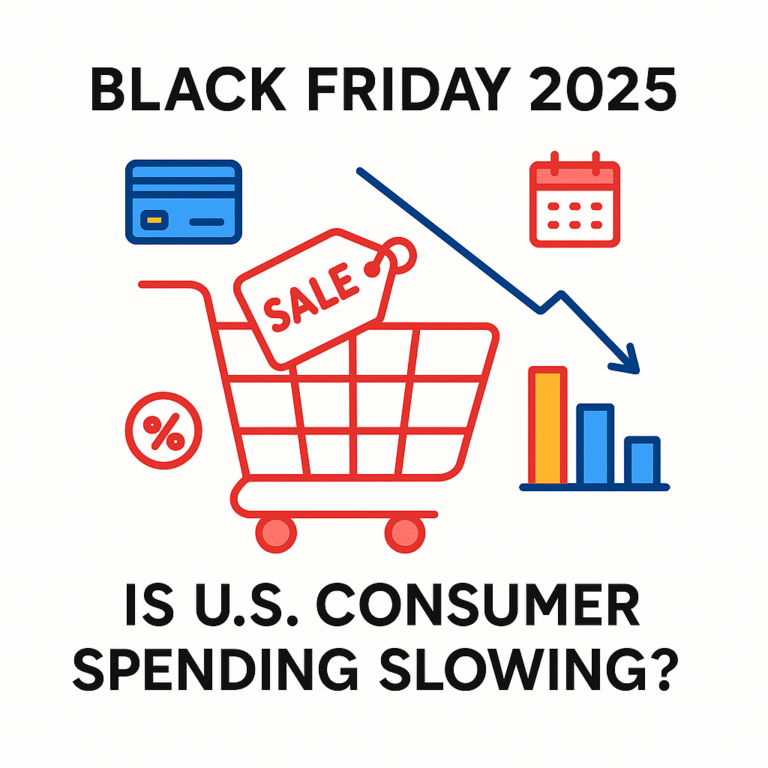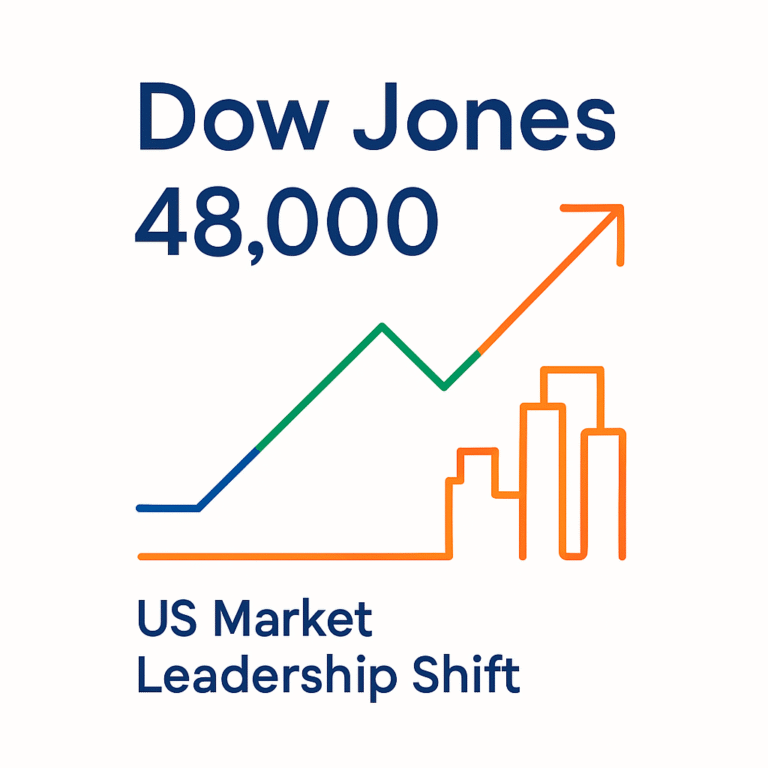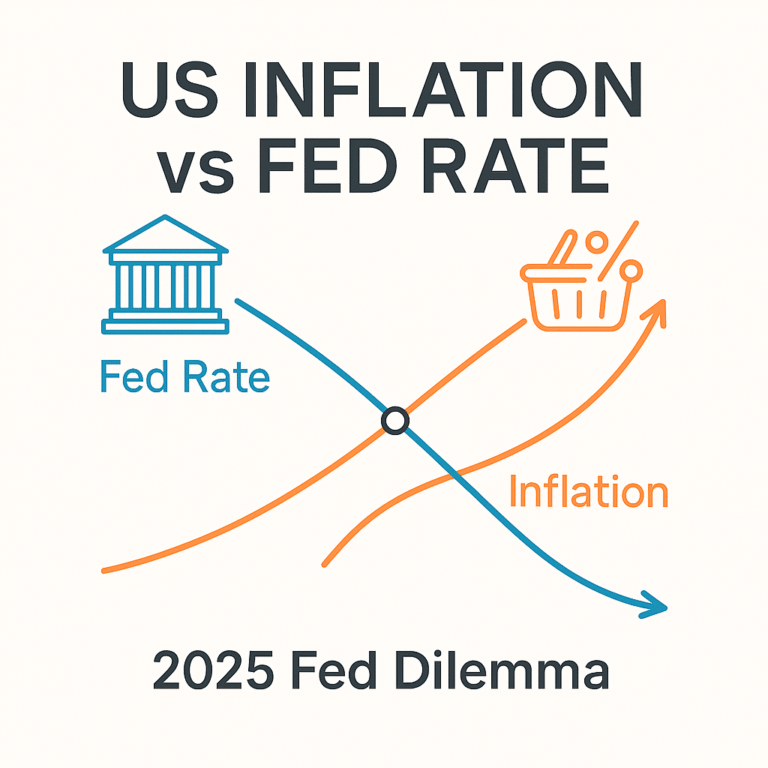4 Visible Cracks in the Financial, Real Estate & Loan Markets under Interest Rate Cut Pressure in 2025
As the U.S. faces mounting interest rate cut pressure, structural cracks are forming across the financial, real estate and loan markets. This article unpacks the implications and investor strategy.
Key Takeaways
✔ Interest rate cut pressure is rising in the U.S., signalling potential easing but also exposing hidden vulnerabilities in the financial, real estate and loan markets.
✔ The average 30-year fixed U.S. mortgage rate has fallen into the mid-6 % range, around 6.19% as of October 23, 2025.
✔ Financial institutions are facing profitability squeeze, real estate markets remain stagnant despite lower borrowing costs, and consumer loans carry growing credit risks.
✔ Investors and borrowers should shift from assuming “lower rates = easier borrowing” to recognising “lower rates with structural cracks” in strategy.
In late October 2025, U.S. 30-year fixed mortgage rates hovered around 6.19%. At the same time, the Federal Reserve (Fed) is widely expected to cut its benchmark rate by 25 basis points in its upcoming meeting.
These signals reflect growing interest rate cut pressure, which might seem favourable for borrowers and investors at first glance.
However, beneath the surface lie less-noticed cracks in the financial, real-estate and loan markets—cracks that could reshape outcomes for banks, homeowners, and credit-seeking consumers alike.
This article explores how the interest-rate-cut narrative intersects with structural risks and what it means for market participants.
Why U.S. Interest Rate Cut Pressure Has Grown and What the Fed Faces
Inflation has cooled modestly and job creation has weakened, prompting the Fed to consider easing policy.
Markets now expect a rate cut at the October meeting, reflecting mounting interest rate cut pressure.
Yet the Fed faces a dilemma: cut too early and risk inflation re-surging; wait too long and risk a deeper slowdown. This delicate balancing act is crucial for how the financial, real-estate and loan markets evolve.
“Economic Indicators Highlight Emerging Cracks under Rate-Cut Expectations”
Key data points underscore the current environment:
|
Indicator |
Recent Level & Trend |
Insights |
|---|---|---|
|
30-year fixed mortgage rate |
~6.19% on October 23, 2025 |
Lower than earlier in the year, easing borrowing costs. |
|
Treasury yields |
10-year at ~4.00% |
Lower yields support lower mortgage rates. |
|
Labor market growth |
Job gains weak, hiring slowing |
Weak employment supports rate cut expectations. |
|
Bank net interest margin (NIM) |
Banks report margin pressure |
Profit squeeze for financial institutions. |
Together these indicators reflect the interest rate cut pressure financial real estate loan market cracks dynamic: borrowing costs are easing, but vulnerabilities lurk in profits, credit and market structure.
Expert Warnings: Lower Rates Don’t Erase Structural Risks
“Inflation and labor-market data continue to drive mortgage-rate direction.” — Darren Tooley, senior loan officer.
“The case for an October rate cut is strong, but investors should brace for anything.” — MarketWatch commentary.
These insights emphasise that while interest rate cut pressure may lower headline borrowing costs, deeper risks—like bank profitability, housing overvaluation and credit-market stress—remain and could surface.
Crack #1: Financial Institution Profitability Under Stress
Lower policy rates help borrowers but squeeze banks. As rates fall, the difference between what banks pay depositors and what they earn from loans (net interest margin) narrows.
Simultaneously, many borrowers already locked into loans at lower rates limit demand for refinancing, reducing banks’ revenue opportunities.
This dual pressure creates a structural crack in the “lower-rate = more lending” assumption and highlights risk in credit-supply channels.
Crack #2: Real Estate Markets Struggle Despite Lower Borrowing Costs
Homebuyers see some relief as mortgage rates drop, yet the housing market remains sluggish. A mortgage rate around 6% is lower than early 2025 levels, but still high by recent historical standards.
Complicating matters: home prices remain elevated, buyers are cautious, and transaction volumes are weak.
Hence a key element of the interest rate cut pressure financial real estate loan market cracks equation: improved rate outlooks aren’t guaranteeing a housing-market rebound.
Crack #3: Rising Consumer-Loan Risk in a Lower-Rate Environment
Lower rates often spur borrowing—this time too, consumer loans (auto, student, credit cards) could grow. But with job growth slowing and incomes under pressure, repayment risks rise.
Add variable-rate loans and adjustable-rate mortgages to the mix, and you have a setting where lower policy rates may mask rising credit stress rather than eliminate it.
Crack #4: Policy-Data Vacuum Fuels Uncertainty
The U.S. government shutdown has delayed key economic data releases.
For the Fed and the markets, this creates uncertainty around the timing and scope of rate cuts.
In this context, interest rate cut pressure is not fully transparent: markets may trade on expectations rather than full data, creating another crack—this time in the policy-confidence realm.
Market Implications & Strategic Takeaways under Rate-Cut Pressure
The cracks add up into material implications:
- Financial institutions may tighten lending standards or re-price risk higher—even as rates fall.
- Real-estate investors and homeowners should avoid assuming that lower rates alone mean value recovery.
- Credit-seeking consumers must be alert to repayment capacity and not just the headline rate.
For investors, a portfolio strategy premised solely on “rate cuts = bullish markets” may under-appreciate the deeper fissures. The long-tail keyword “interest rate cut pressure financial real estate loan market cracks” encapsulates this dual-track reality of opportunity and vulnerability.
What to Watch: Upcoming Events & Hidden Risks
- The Fed’s October 29, 2025 meeting is critical for signals on the rate path.
- Key variables: inflation rebound, job-market hotspots, Treasury yield shifts. Any upside surprise could reverse rate-cut expectations.
- Markets to monitor: bank earnings (for margin stress), housing-transaction volumes, consumer-loan delinquency trends.
- If cracks widen, the reaction could be abrupt—even with benign headline rates.
Interest-rate-cut pressure is real, and at first glance it looks like a win for borrowers and investors.
Yet the “interest rate cut pressure financial real estate loan market cracks” framework reminds us that beneath the surface lie structural vulnerabilities—in bank profits, housing dynamics, credit markets and policy transparency.
Recognising and addressing those cracks is now as important as tracking the headline rate moves.
References
- “Mortgage Rates Inch Up | Today, October 27, 2025” — The Mortgage Reports
- “U.S. Mortgage Rates Dip to 6.27% …” — Finance & Commerce
- “Fed Poised to Cut Rates This Week…” — Reuters
- “Average Mortgage Rates Across the U.S. in 2025” — Visual Capitalist
- “Will Mortgage Interest Rates Drop After This Week’s Fed Meeting?” — CBS News
- “How New Inflation Data Could Impact 2025 Mortgage Rates” — Investopedia

